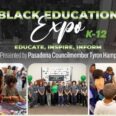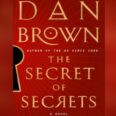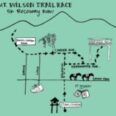
“Each year, our curators take us to places we thought we knew but didn’t,” said Sandra Brooke Gordon, Avery Director of the Library. “The items they present to the council for consideration show us the past in ways ranging from public to intimate—providing glimpses that illuminate history, literature, science, and life.”
The newly acquired materials include a manuscript copybook containing 87 previously unknown letters and some accounting from William Freeman (1645-1707), a Caribbean-born London-based agent involved in the early British Atlantic slave trade from 1685 to 1690.
“These recently discovered letters shed light on a crucial gap in our understanding of early Atlantic slavery and empire building,” said Vanessa Wilkie, William A. Moffett Senior Curator of Medieval Manuscripts and British History. “This letter book gives scholars material to support more nuanced conceptions of systems of slavery, capitalism, and colonialism, and to better understand the lived experiences of those who were trapped within and resisted those systems.”
A rare orderly book from the 1764 expedition of British officer Henry Bouquet offers the only known account by a Pennsylvania militia unit during Pontiac’s War (1763-1765). Written by Sgt. James McMahan (1734-1823), a first-generation Scots Irish immigrant who settled on lands taken from the Delawares in the wake of the swindle known as the Walking Purchase, the manuscript provides unique insights into military life before the American Revolutionary War.
“Records from this conflict are exceedingly rare,” said Olga Tsapina, Norris Foundation Curator of American History.
The council also acquired ninety-three manuscripts and printed documents totaling about 150 pages detailing the lives of Chinese indentured laborers in Cuba from 1860 through 1881.
“These documents show us the human cost of sugar production in the 19th century,” said Diego A. Godoy, associate curator of California and Hispanic Collections. “They reveal a chapter of Asian diaspora history that is often overlooked and adds crucial depth to our understanding of labor, migration, and survival in the Americas.”
The first-ever color-printed medical text, Gaspare Aselli’s “De Lactibus” (1627), joins the collection with its groundbreaking anatomical discoveries and four vivid color-printed chiaroscuro woodcuts using several distinct inks.
Joel Klein, Molina Curator for the History of Medicine and Allied Sciences, said, “This book was revolutionary. Aselli’s De Lactibus didn’t just change how doctors understood the body—it changed how they saw it. The precision of the color woodcuts communicated a depth of anatomical understanding that text alone could never convey.”
A unique copy of William Sole’s 1798 “Menthae Britannicae,” featuring 26 original watercolors with manuscript annotations instead of the standard 24 engraved plates, was also acquired.
Sole, a British apothecary and botanist, published his findings on mints in 1798, accompanied by 24 full-plate etchings in the standard edition.
Finally, the council acquired a collection of intimate letters from late in John Steinbeck’s career between the author, his wife Elaine, and John Fearnley, a casting director for Rodgers and Hammerstein in New York, along with books inscribed by Steinbeck to Fearnley. Fearnley knew Steinbeck’s third wife, Elaine, from her career working in musical theater. Most of the letters were written in 1959, primarily during Steinbeck’s sojourn in England, where the Steinbecks moved so that John could work on his final book, “The Acts of King Arthur and His Noble Knights,” a retelling of Thomas Malory’s late medieval compilation of Arthurian legends.
The letters detail Steinbeck’s delight working on this project in the region where the events allegedly took place and in proximity to Winchester, where an important manuscript of Malory’s work had recently been discovered.
“These days in England are important out of all proportions,” he writes to Fearnley in spring 1959. “I don’t recall ever having been so content and unbewildered. Words for my work appear like little magic footprints as though an invisibility has passed by and I am pleased with them.” He also noted, “I feel so at home here—more than I remember anyplace.”
Now in its 28th year, the Library Collectors’ Council has helped raise more than $7 million since its founding in 1997 to support the acquisition of rare materials for The Huntington’s collections.


















